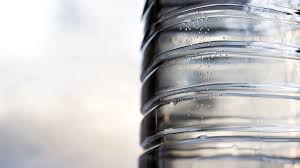 Recycling plastic – Are we moving in the right direction?
Recycling plastic – Are we moving in the right direction?
An estimated 32% of all plastic ends up being dumped after just one use, reveals the 2016 New Plastics Economy report. The EU ban on single-use plastics will take effect in 2021. New, tougher requirements will also be introduced for producers of other plastic product categories.
“The much-touted new legislation on single-use plastic products will not solve the huge recycling dilemma.
Plastics are already a highly regulated product group. They have to be produced using REACH-compliant chemicals, and there is a staggering amount of legislation on recycling. If the EU directives on packaging were fully implemented in all European countries, there would be no need to dump any plastic at all at landfills,” says Vesa Kärhä, CEO of the Finnish Plastics Industries Federation.
In Finland, the collection and recycling of consumer plastics is off to a slow start, but gradually catching up with Europe’s leaders, Switzerland and Sweden.
“When you look at Europe’s leading recyclers, they have all observed a total ban on landfilling for a long time. In other words, they have totally outlawed a cheap landfill solution. The European plastic industry recommends the same, too. Naturally, it has to be carried out in a way that gives operators enough time to figure out what can be done about the issue. Recycling and energy plants have to be available,” Kärhä notes.
A turn for the positive
The history of plastic reuse began in 1980, when it was first used in energy generation. In the 1990s, people started to recycle plastic, after which the recycling rate has increased steadily by 0.7% annually. If current progress continues, by 2050 about 50% of plastic will be utilised as energy and 44% recycled, leaving only 6% left over as waste.
The Plastics – the Facts 2018 report reveals that, for the first time ever, a larger amount of plastic was recycled than taken to landfills in 2016. In 2017, 42% of plastic was incinerated for energy, 31% was recycled, and 27% taken to landfills.
One tricky challenge for recycling is the globalised nature of commerce.
“Products are transported from one continent to another. In Finland and Sweden, there are recycling guidelines for packaging designers and value chains. The product and material may be produced in compliance with recycling guidelines, but question marks still surround the practices observed by operators in the different countries where products are exported. But there are signs of progress,” Kärhä sums up.
Read more about recycling plastic
Text: Saara Töyssy
